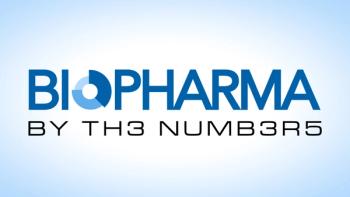
Generic Opioids Create Policy Issues
Widespread use and abuse of opioid painkillers is prompting efforts to develop new drugs and formulations that resist abuse while providing relief to legitimate patients.
Widespread use and abuse of opioid painkillers is prompting efforts to develop new drugs and formulations that resist abuse while providing relief to legitimate patients. Approximately two million Americans abuse prescription opioids each year, leading to more than one million emergency room visits; the Centers for Disease Control and Prevention (CDC) calculates that more than 22,000 overdose deaths occurred in 2013 involving opioids and benzodiazepines.
Abuse-Deterrent Formulations
One response from industry, which has been supported by policy makers and FDA, is to develop new drugs with abuse-deterrent formulations (ADFs) that are more difficult to misuse. But there’s a tradeoff in devising products that employ costly innovative technologies and ensuring patient access to these new products that are invariably more expensive.
ADF technology is improving rapidly, with FDA supporting new abuse reduction product designs, as seen in agency approval so far of four products with ADF properties and labels. Determining the abuse potential of a product and obtaining abuse-deterrent language in a drug label requires a multi-pronged development program, explained Terri Morton of Mallinckrodt Pharmaceuticals at the ADF Summit in May 2015. FDA issued a final guidance in April 2015 that clarifies the design and use of in vitro manipulation and extraction studies, pharmacokinetic assessment, clinical abuse potential studies, and continued evaluation to determine the impact of actual product use in the post-marketing setting.
While ADFs appear to help reduce opioid-related overdoses and related public health problems, the higher cost of these products has drawn protests from legitimate pain patients that find that some ADFs are less effective and undesired, and from payers faced with steeper bills. Patients and providers want to retain access to low-cost generic versions of traditional painkillers even after FDA approves an ADF version of the product, but that raises a host of technical, legal, and policy issues.
Participants at the ADF Summit debated whether FDA should require generic products to demonstrate abuse deterrent “equivalence” in addition to bioequivalence to the reference product. And if the agency adopts such a policy, would the generic maker have to use the same method of deterrence or just demonstrate comparable deterrence if employing a different technology. FDA is scheduled to issue guidance in 2015 on the testing and marketing of generic opioid analgesics, which should address such tricky issues as generic equivalence and generic painkiller development.
Industry Challenges
Meanwhile, the opoid abuse epidemic continues to challenge pharma companies and policy makers. Congress has been investigating abuse developments and considering legislation that offers added exclusivity and other incentives for industry investment in R&D on safer pain medicines. States have proposed more than 200 bills to better control opioid prescribing and dispensing. But one consequence of cracking down on prescription drug abuse is a notable increase in heroin use and related overdose deaths, plus a reduction in the number of pharmacists willing to fill legitimate prescriptions for pain meds. The Department of Health and Human Services has launched initiatives to better educate prescribers on opioid abuse and treatment options. Chicago recently sued five leading pharmaceutical companies for alleged fraudulent promotional campaigns that encouraged the use of painkillers, leading to addiction, overdose, and diversion locally and across the nation. There’s a strong sense in the public health community that heavy industry marketing of pain medicines has been too successful in driving up the use of these products. But ADFs can’t solve all these problems.
Newsletter
Stay at the forefront of biopharmaceutical innovation—subscribe to BioPharm International for expert insights on drug development, manufacturing, compliance, and more.





